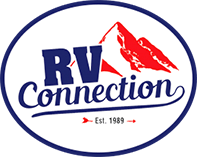A Beginner's Guide to RV Holding Tanks
 There are plenty of amenities that come with owning a recreational vehicle. The plumbing system, which consists of the holding tanks, is one of the biggest Features. Many modern RVs come with a full bathroom, if not a bath, and a half or even two full bathrooms, as well as a working kitchen sink and other watering outlets. This means your camper comes with a complex plumbing system to help all this run smoothly.
There are plenty of amenities that come with owning a recreational vehicle. The plumbing system, which consists of the holding tanks, is one of the biggest Features. Many modern RVs come with a full bathroom, if not a bath, and a half or even two full bathrooms, as well as a working kitchen sink and other watering outlets. This means your camper comes with a complex plumbing system to help all this run smoothly.
RV Connection in Lawton, Oklahoma, has provided some of the basic need-to-know tips and information to help you make the best use of an RV’s holding tanks. Keep reading to learn more and if you need an expert’s opinion, contact our service department to get you back on the road.
How do the RV Holding Tanks Work?
Most recreational vehicles (except very small trailers and pop-up campers) have three tanks as part of their water and waste systems. The fresh water tank holds water for washing dishes, showers, and flushing the toilet. While some people use water from their freshwater tank for drinking, others prefer to buy bottled water. The fresh water tank is filled using a clean hose, one reserved for use with drinking water, which is connected to your local safe drinking water supply. Generally, a white hose is used exclusively for this purpose and is stored separately from other hoses so that it doesn’t get contaminated.
The gray Water tank is used to collect used kitchen and bathroom water and store it until it can be dumped safely into a dump station or campground septic system.
The black water tank is essentially your RV’s version of a septic tank. It holds waste that comes from your toilet before being emptied into a wastewater treatment system. A well-maintained black water tank will help to break down the waste to make it easier to clean.
How to Dump Your Holding Tanks?
Your campground probably offers an approved waste disposal site, so this should be your first stop for dumping the holding tanks. If not, you’ll want to find the nearest one with public access. Once you find a location, hook up your wastewater hose. Make sure that you empty the black water tank first. Open the valve and let the tank empty. Then, empty your gray water tank. This will help flush out your hose so there’s no waste residue making it stink.
Because your sink and shower use several gallons of water every day, you’ll want to keep a close watch on your grey water tank monitor. This will tell you how much liquid is currently in the tank. When it’s at three-quarters full, remember that it’s time to empty your tank.
We hope that this guide to RV holding tanks has been useful. If you need more information or you’re interested in checking our selection of RVs for sale, be sure to get in touch with us at RV Connection in Lawton, OK. We welcome all those in Altus and Duncan.

